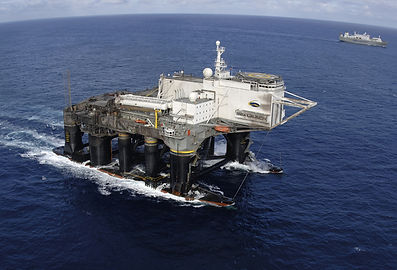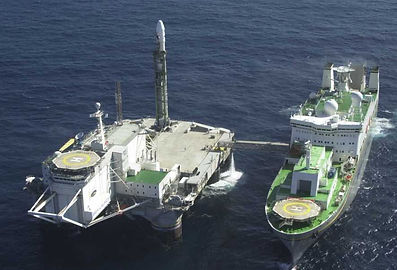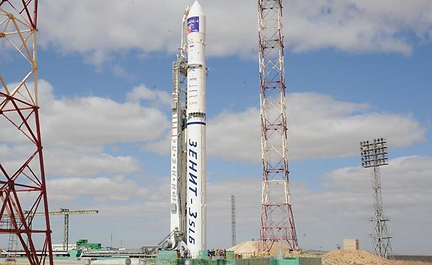Equipment
Of course, launching rocket vehicles is not what you would call 'conventional'. Therefore all components have to be designed from scratch, or redesigned to suit the purpose.

Archimedes
Archimedes is a semi-submersible which has been converted from a drilling vessel to a launch platform. It contains the launch site itself, a hangar for storage of the rocket and a control centre including accommodations
Length:
Beam:
Draught:
Displacement empty:
Displacement full:
132.9 m
67 m
34.5 m
27.000 metric tons
45.900 metric tons

Thales
The Assembly and Command Ship Thales is an all-new, specially designed vessel that serves as a floating rocket assembly factory while in port, provides crew and customer accommodations and also houses mission control facilities for launches at sea.
Thales is approximately 200 metres (660 ft) long, 32 metres (105 ft) wide, displaces more than 30,000 tonnes (30,000 long tons; 33,000 short tons) and has a cruising range of 33,000 kilometres (21,000 mi). Thales provides accommodations for up to 240 crew members, customers and VIPs—including medical facilities, dining room, recreation and entertainment facilities

Zenit-3SL
The Zenit-3SL is an expendable carrier rocket. First flown in 1999, it has been launched 35 times, with three failures and one partial failure. It is a member of the Zenit family of rockets, and is built by the Yuzhnoye Design Bureau. RKK Energia produces the Block DM-SL upper stage, whilst the payload fairing is produced by Boeing. The Zenit-3SL design began in the late 1980s as the Zenit-3, a proposed replacement for the Proton-K, which would have used a Zenit-2 rocket with a Block D upper stage.
The choice for the Zenit-3SL carrier rocket has been made on a few grounds: First of all it in powerful enough to carrier most conventional satellites into space (up to 6 metric tons). Second, with only 3 failed attempts, it has a success ratio of over 90%. And last but not least, it has the best dollar to kg ratio of the conventional rocket carriers today in use.
